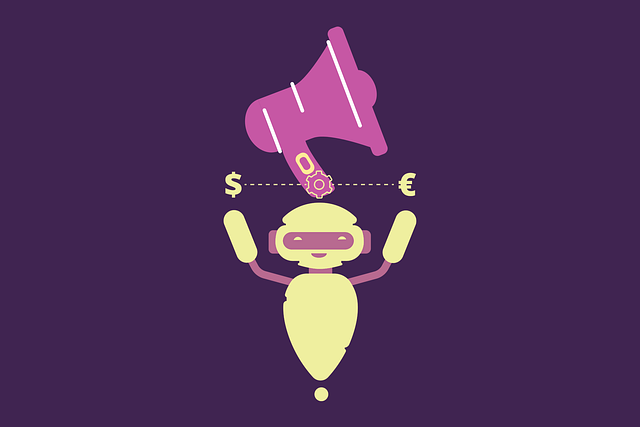AI coffee bean restock forecasting is a powerful tool for breakfast and brunch restaurants to optimize inventory management, minimize waste, and enhance customer satisfaction through dynamic pricing strategies. By analyzing historical sales data, seasonal trends, and external factors, these systems predict optimal restocking times for fresh beans. Additionally, AI-driven pricing models allow real-time adjustments based on demand and market conditions, maximizing revenue during peak periods while offering discounts during slower times. However, successful implementation requires robust data management, privacy considerations, and transparent communication to maintain customer loyalty.
“Revolutionize your brunch game with AI-driven dynamic pricing models. In today’s competitive restaurant landscape, optimizing revenue requires precise strategies. This article explores how AI coffee bean restock forecasting can transform pricing dynamics, ensuring maximum profitability. We delve into the implementation of smart pricing strategies, revealing their benefits and challenges. Discover how these models adapt to market demands, from understanding customer behavior to predicting coffee bean inventory needs. Embrace the future of brunch dining with AI-enhanced pricing.”
- Understanding AI Coffee Bean Restock Forecasting
- Implementing Dynamic Pricing Strategies for Optimal Revenue
- Benefits and Challenges of AI-Driven Brunch Restaurant Pricing Models
Understanding AI Coffee Bean Restock Forecasting

AI coffee bean restock forecasting is a powerful tool for breakfast brunch restaurants to optimize their inventory management. By leveraging machine learning algorithms, these systems analyze historical sales data, seasonal trends, and even external factors like weather to predict when coffee beans will need restocking. This dynamic approach ensures that the restaurant always has fresh, high-quality beans on hand, enhancing the customer experience while minimizing waste.
Moreover, AI forecasting can help restaurants avoid stockouts, which are not only frustrating for customers but also impact sales. By understanding and anticipating demand, the restaurant can adjust pricing models accordingly, implementing dynamic pricing strategies that reflect current market conditions. This ensures profitability while remaining competitive in a fast-paced industry where customer satisfaction is key.
Implementing Dynamic Pricing Strategies for Optimal Revenue

Implementing dynamic pricing strategies is a game-changer for AI-powered breakfast brunch restaurants, allowing them to optimize revenue and stay competitive in the market. By leveraging advanced algorithms and data insights, these restaurants can adjust prices based on real-time demand, seasonal trends, and even inventory levels, such as predicting when to restock fresh coffee beans.
For instance, during peak hours or special events, dynamic pricing can increase prices for in-demand items like lattes or pancakes while offering discounts during quieter periods. This ensures that the restaurant maximizes revenue from popular menu items without overcharging customers during off-peak times. Moreover, with AI coffee bean restock forecasting, restaurateurs can anticipate inventory needs and adjust pricing strategies accordingly, minimizing waste and maximizing profit margins.
Benefits and Challenges of AI-Driven Brunch Restaurant Pricing Models

AI-driven dynamic pricing models offer significant advantages for brunch restaurants, particularly in optimizing revenue and enhancing customer experience. By leveraging machine learning algorithms, these systems can analyze vast datasets, including historical sales data, market trends, and competitive pricing, to set prices that fluctuate in real-time. This allows restaurants to charge premium rates during peak periods when demand is high, while offering discounts during slower times to attract more patrons. Such models also streamline operations by automating price adjustments for menu items like coffee beans, where AI can predict stock levels and adjust prices accordingly, ensuring fair pricing without overcharging customers.
However, implementing AI-driven pricing presents challenges. Restaurants must ensure robust data collection and quality to train the algorithms accurately. Privacy concerns related to customer data usage need careful consideration and transparent handling. Additionally, there’s a risk of alienating regular customers if price changes seem too erratic or unfair. Effective communication about pricing strategies and maintaining a balance between dynamic pricing and customer loyalty are crucial aspects that restaurants must master when adopting AI coffee bean restock forecasting models for their brunch offerings.
AI breakfast brunch restaurants can significantly enhance their revenue management through dynamic pricing models, leveraging tools like AI coffee bean restock forecasting. By adapting prices based on real-time demand and operational constraints, these restaurants not only optimize profits but also provide a personalized experience for customers. However, implementing such models requires careful consideration of benefits and challenges, ensuring the technology aligns with business goals and customer expectations.
